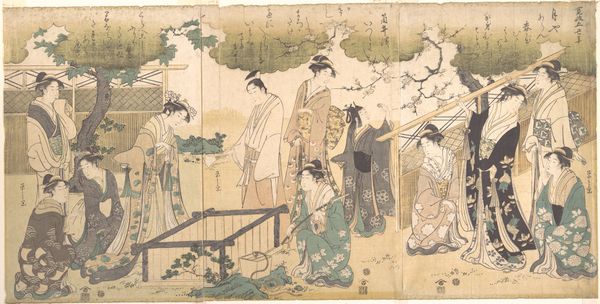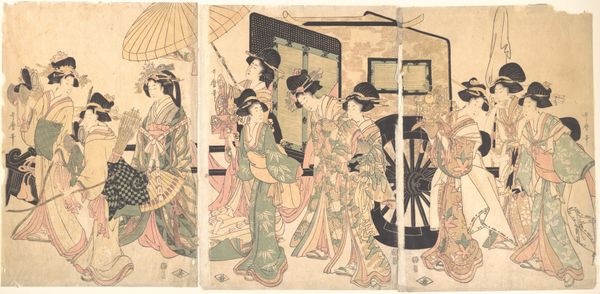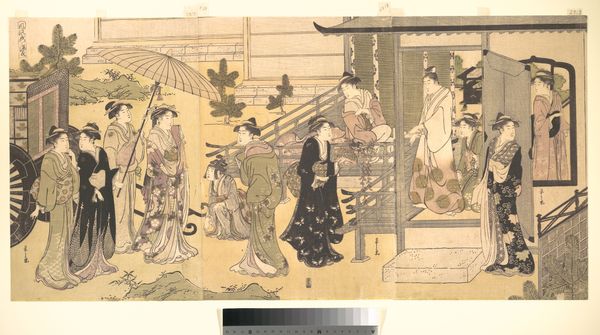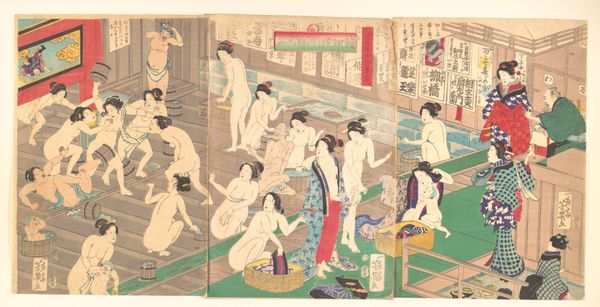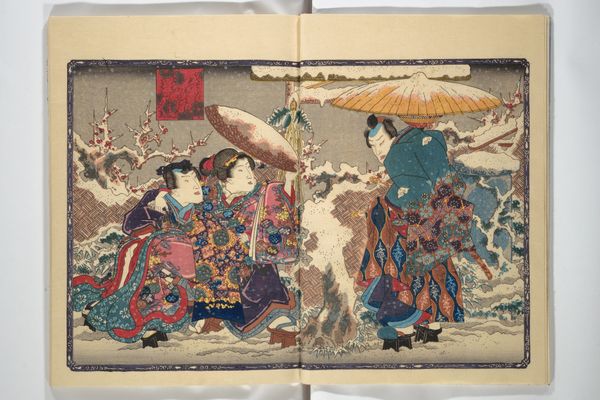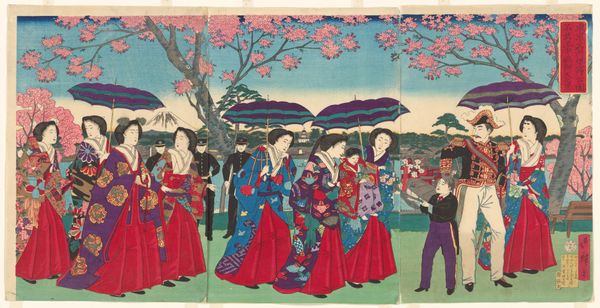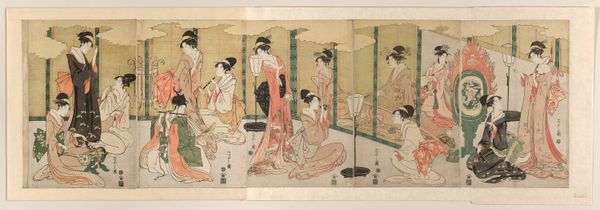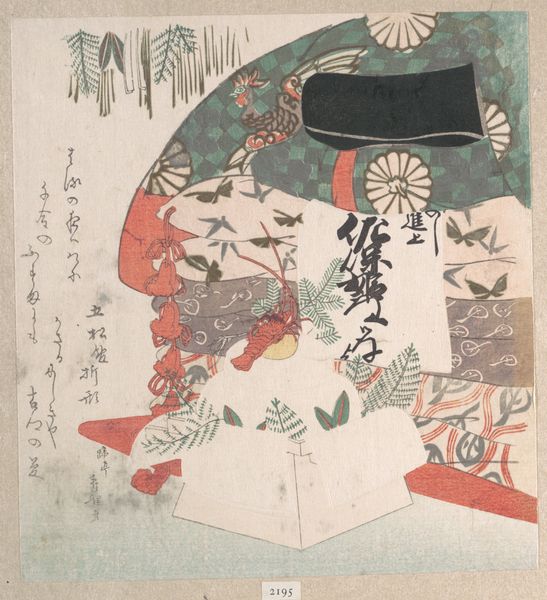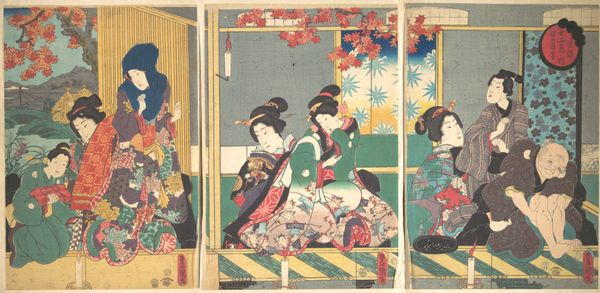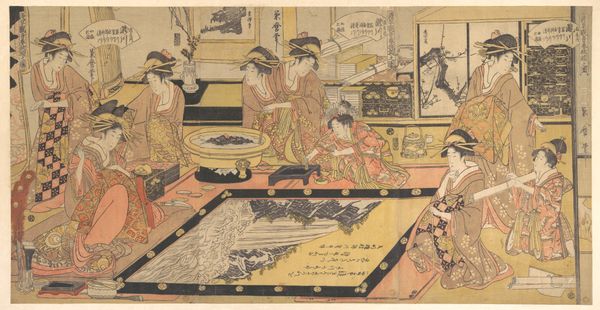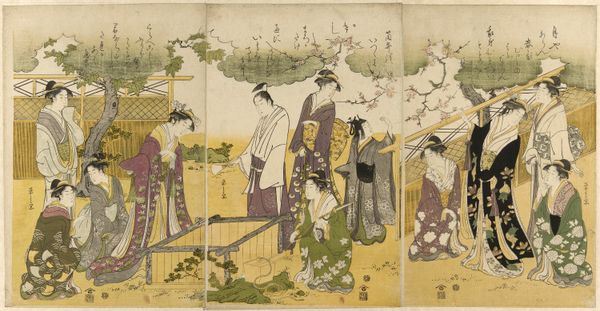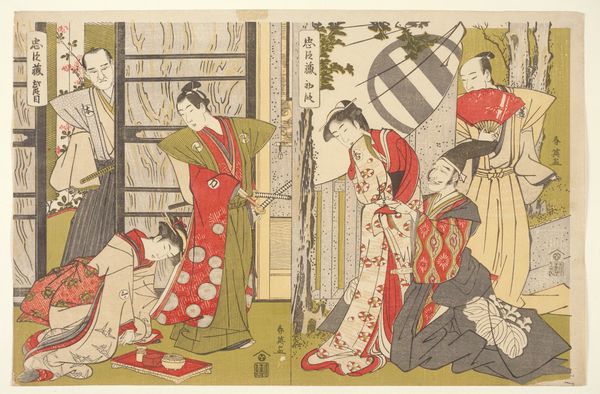
A princess traveling with her attendants descends from a palanquin c. 1801 - 1804
0:00
0:00
print, woodblock-print
# print
#
asian-art
#
ukiyo-e
#
figuration
#
woodblock-print
#
genre-painting
Dimensions: 74.9 × 37.5 cm (29 1/2 × 14 3/4 in.)
Copyright: Public Domain
Editor: So this woodblock print, "A princess traveling with her attendants descends from a palanquin," was created by Utagawa Toyokuni I in the early 1800s. It feels so stylized, almost like a carefully choreographed scene. What strikes you about this piece? Curator: What stands out to me is how Toyokuni positions women and power. Think about the historical context: Edo-period Japan was a highly stratified society, yet Ukiyo-e prints often gave voice to the lives of those outside the dominant samurai class. This scene depicts women of the court, perhaps seemingly privileged, but their lives were often circumscribed by rigid expectations. Do you see how their elaborate clothing, while beautiful, might also represent a kind of gilded cage? Editor: That's interesting, I hadn't considered the limitations of their status. The scene does seem very performative. All the attendants, the elaborate palanquin, it’s all on display. Curator: Exactly. And consider the male gaze that was so prevalent at the time. Ukiyo-e prints, while seemingly celebrating female beauty and grace, were often created for a male audience. How does this knowledge affect your interpretation of the work? Do you feel this image empowers women or objectifies them, or both? Editor: I guess it's complicated. The detail lavished on each figure does give them a certain presence, but there is this sense of formality and control. The print almost feels like it is more about showcasing status and wealth than individuality. Curator: Precisely. And that tension is at the heart of understanding the work's cultural significance. These images were commodities circulating within a complex system of social power. This forces us to interrogate our own gaze and assumptions. What does it mean to observe this scene centuries later? Editor: That’s so much to consider, but I think I have a better understanding of the various contexts this artwork embodies. Thanks for opening my eyes to how gender, status, and art intersect! Curator: My pleasure! Keep questioning the narratives that visual culture presents.
Comments
No comments
Be the first to comment and join the conversation on the ultimate creative platform.
